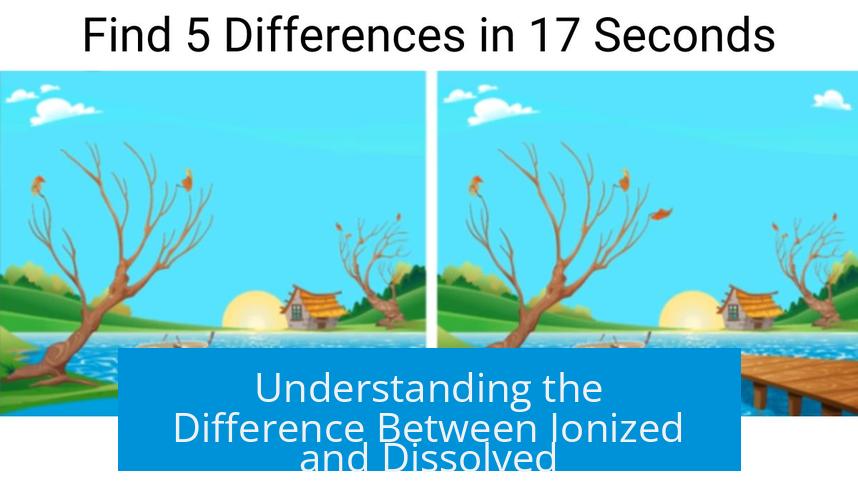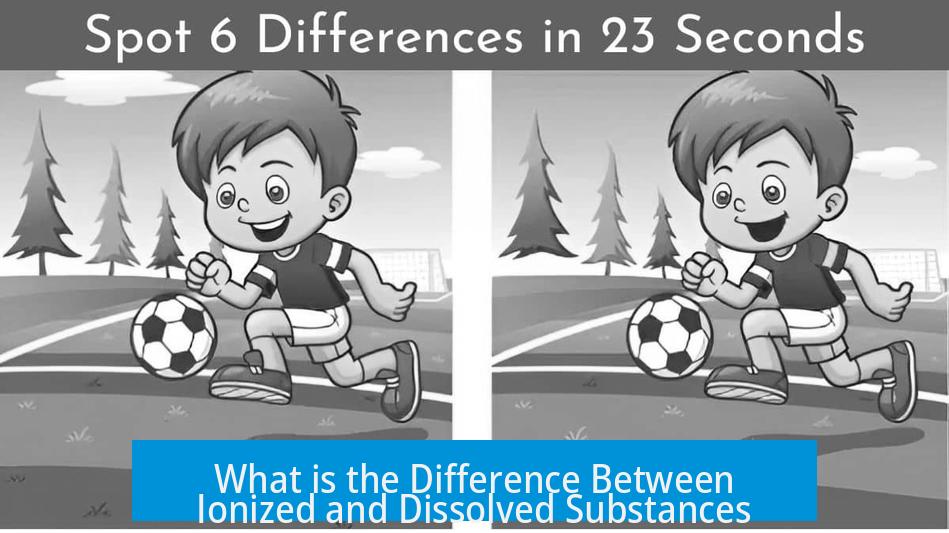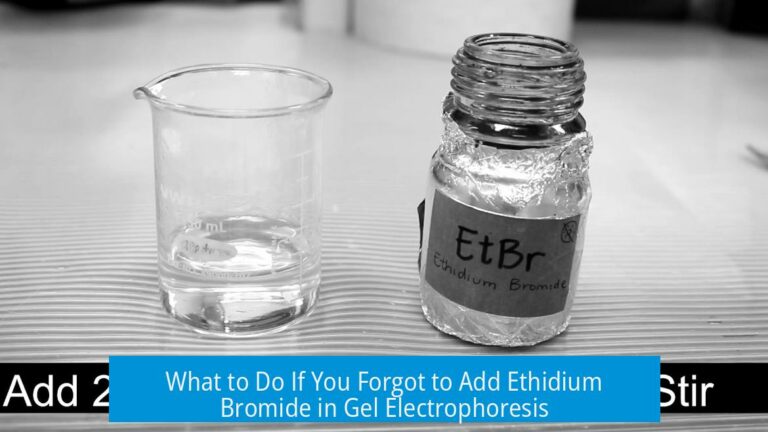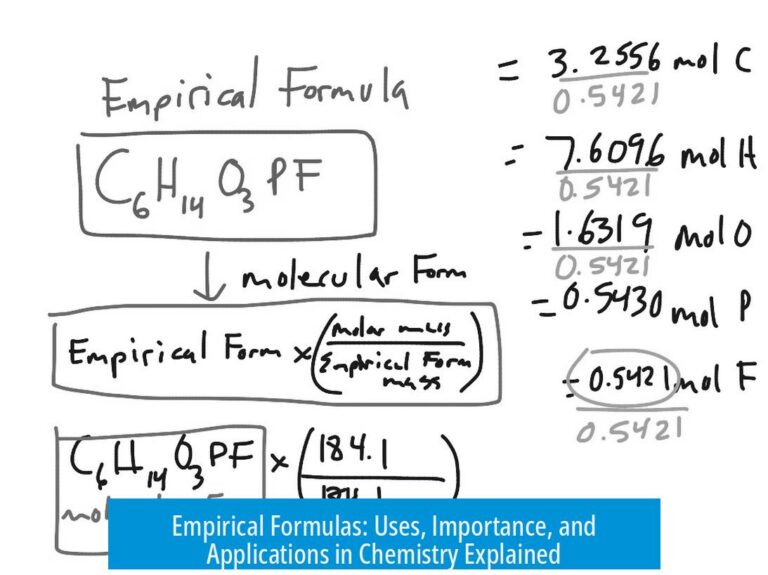Understanding the Difference Between Ionized and Dissolved

The difference between “ionized” and “dissolved” lies in the processes they describe: ionization refers to the formation of charged ions through electron gain or loss, while dissolution refers to the process of a substance dispersing into a solvent, often stabilized by the solvent molecules without necessarily forming ions.
1. What Does Ionized Mean?
Ionization is a chemical process where an atom or molecule acquires a charge by gaining or losing electrons. This change transforms the neutral particle into an ion. For example, when common salt (sodium chloride or NaCl) dissolves in water, it ionizes by splitting into sodium ions (Na+) and chloride ions (Cl-).
Ionization can also occur outside of solutions. For instance, in plasma—the fourth state of matter—particles are ionized without dissolving in a solvent. Ionization may result from various mechanisms like radiation exposure or redox (reduction-oxidation) reactions that transfer electrons.
- Key features of ionization:
- Involves electron transfer to form charged ions.
- Can occur in different environments such as solutions or gases.
- Does not inherently mean the substance is dissolved.
- Example: Ionization of NaCl in water producing Na+ and Cl- ions.
2. What Does Dissolved Mean?
Dissolution describes when a substance disperses into a solvent to form a solution. In this state, the molecules or ions of the solute are surrounded and stabilized by the solvent molecules, a process called solvation. The solute is uniformly spread at the molecular or ionic level in the solvent.
Importantly, dissolution does not require the formation of ions. Many substances dissolve by interacting with solvent molecules without changing their chemical structure or ionizing. For example:
- Acetone dissolves in water as intact molecules without producing ions.
- Methanol dissolves in water without ionization.
- Sugar dissolves by hydrogen bonding to water molecules but does not ionize.
This distinction confirms that a substance can be dissolved and remain in its neutral molecular form.
3. Ionization Versus Dissolution: How Are They Related?
Ionization and dissolution sometimes occur simultaneously, but they describe distinct phenomena:
| Aspect | Ionization | Dissolution |
|---|---|---|
| Definition | Formation of charged ions by electron gain or loss. | Dispersion of a substance in a solvent, stabilized by solvation. |
| Example | NaCl splitting into Na+ and Cl- ions in water. | Sugar dissolving in water without ion formation. |
| Is ionization required for dissolution? | No; substances may dissolve without ionizing. | Not necessarily; ionization is not a prerequisite. |
| Can ionization occur without dissolution? | Yes; ionization can occur in gases or plasma states. | No; dissolution inherently involves a solvent. |
Often, ionic compounds like salt ionize as they dissolve. Water molecules surround the ions and stabilize them through electrostatic interactions. These are two separate processes that lead to the same practical result of ions existing in solution.
4. Clarifying Ionization Versus Dissociation
Sometimes, terminology around ionization and dissolution can cause confusion. It is useful to distinguish these terms from dissociation. Dissociation specifically refers to the breaking apart of ionic compounds into their constituent ions in solution without the electron transfer central to ionization.
- Dissociation example: NaCl separates into Na+ and Cl- ions when dissolved.
- This process is often called ionization loosely, but strictly ionization involves electron gain or loss.
- Ensuring clarity by distinguishing ionization (electron transfer) from dissociation (breaking ionic bonds) helps avoid confusion.
5. Common Examples
- Sodium Chloride (NaCl): Dissolves in water by dissociating (ionizing) into Na+ and Cl- ions, which are solvated by water molecules.
- Sugar: Dissolves in water without ionizing. Individual sugar molecules are stabilized by hydrogen bonds with water.
- Acetone: Molecularly dissolves in water without ion formation.
- Plasma: Ionized gas with free ions; no dissolution involved.
Summary of Differences
| Term | Meaning | Example | Key Point |
|---|---|---|---|
| Ionized | Atom or molecule gains or loses electrons to form charged ions. | NaCl → Na+ + Cl- in water | Electron transfer; can occur without dissolution. |
| Dissolved | Substance dispersed in a solvent and stabilized by solvent molecules (solvation). | Sugar or acetone dissolved in water | Solvation without necessary ion formation. |
Key Points to Remember
- Ionization involves creating charged ions through electron gain or loss.
- Dissolution is the process of a substance dispersing uniformly in a solvent.
- Substances can dissolve without ionizing, such as sugar and acetone.
- Substances can be ionized without dissolving, such as in plasmas or gases.
- The terms ionization and dissociation differ; dissociation refers to ionic compounds splitting into ions without electron transfer.





Leave a Comment